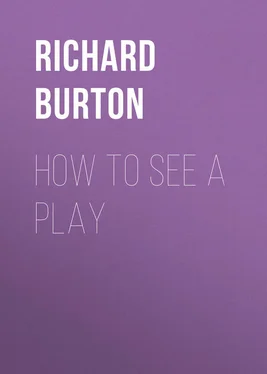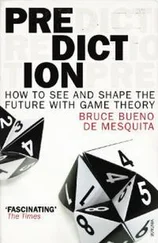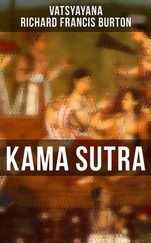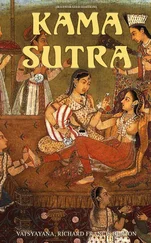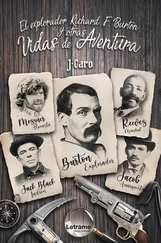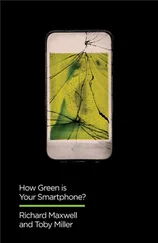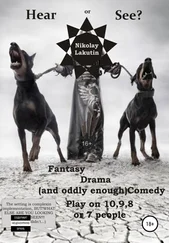Richard Burton - How to See a Play
Здесь есть возможность читать онлайн «Richard Burton - How to See a Play» — ознакомительный отрывок электронной книги совершенно бесплатно, а после прочтения отрывка купить полную версию. В некоторых случаях можно слушать аудио, скачать через торрент в формате fb2 и присутствует краткое содержание. ISBN: , Жанр: foreign_antique, foreign_prose, foreign_dramaturgy, на английском языке. Описание произведения, (предисловие) а так же отзывы посетителей доступны на портале библиотеки ЛибКат.
- Название:How to See a Play
- Автор:
- Жанр:
- Год:неизвестен
- ISBN:http://www.gutenberg.org/ebooks/32433
- Рейтинг книги:5 / 5. Голосов: 1
-
Избранное:Добавить в избранное
- Отзывы:
-
Ваша оценка:
- 100
- 1
- 2
- 3
- 4
- 5
How to See a Play: краткое содержание, описание и аннотация
Предлагаем к чтению аннотацию, описание, краткое содержание или предисловие (зависит от того, что написал сам автор книги «How to See a Play»). Если вы не нашли необходимую информацию о книге — напишите в комментариях, мы постараемся отыскать её.
How to See a Play — читать онлайн ознакомительный отрывок
Ниже представлен текст книги, разбитый по страницам. Система сохранения места последней прочитанной страницы, позволяет с удобством читать онлайн бесплатно книгу «How to See a Play», без необходимости каждый раз заново искать на чём Вы остановились. Поставьте закладку, и сможете в любой момент перейти на страницу, на которой закончили чтение.
Интервал:
Закладка:
The drama in all lands is trying as never before to represent life in speech as well as act; and the strain hitherto put upon the actor, who in the past had as part of his function to make the artificial and unreal plausible and artistic, has been so far removed as to enable him to give his main strength to genuine interpretation.
The time values on the stage are a limitation which makes for artificiality; actual time must of necessity be shortened, for if true chronology were preserved the play would be utterly balked in its purpose of presenting a complete story that, however brief, must cover more time than is involved in what is shown upon the boards of a theater. As a result all time values undergo a proportionate shrinkage. This can be estimated by the way meals are eaten on the stage. In actual life twenty minutes are allotted for the scamped eating time of the railway station, and we all feel it as a grievance. Half an hour is scant decency for the unpretentious private meal; and as it becomes more formal an hour is better, and several hours more likely. Yet no play could afford to allow twenty minutes for this function, even were it a meal of state; it would consume half an act, or thereabouts. Consequently, on the stage, the effect of longer time is produced by letting the audience see the general details of the feast; food eaten, wine drunk, servants waiting, and conversation interpolated. It is one of the demands made upon the actor's skill to make all these condensed and selected minutiæ of a meal stand for the real thing; once more art is rearranging life, under severe pressure. If those interested will test with watch in hand the actual time allowed for the banquet in A Parisian Romance , so admirably envisaged by the late Richard Mansfield, or the famous Thanksgiving dinner scene in Shore Acres , fragrantly associated with the memory of the late James A. Herne, they will possibly be surprised at the brevity of such representations.
Because of this necessary compression, a scale of time has to be adopted which shall secure an effect of actualness by a cunning obeyance of proportion; the reduction of scale is skillful, and so the result is congruous. And it is plain that fiction may take more time if it so desires in such scenes; although even in the novel the actual time consumed by a formal dinner would be reproduced by the novelist at great risk of boring his reader.
Again, with disadvantages in mind, it might be asserted that the stage story suffers in that some of the happenings involved in the plot must perforce transpire off stage; and when this is so there is an inevitable loss of effect, inasmuch as it is of the nature of drama, as has been noted, to show events, and the indirect narrative method is to be avoided as undramatic. Tyros in play-writing fail to make this distinction; and as a generalization it may be stated that whenever possible a play should show a thing, rather that state it. "Seeing is believing," to repeat the axiom. Yet a qualifier may here be made, for in certain kinds of drama or when a certain effect is striven for the indirect method may be powerfully effective. The murder in Macbeth gains rather than loses because it takes place outside the scene; Maeterlinck in his earlier Plays for Marionettes, so called, secured remarkable effects of suspense and tension by systematically using the principle of indirection; as where in The Seven Princesses the princesses who are the particular exciting cause of the play are not seen at all by the audience; the impression they make, a great one, comes through their effect upon certain characters on the stage and this heightens immensely the dramatic value of the unseen figures. We may point to the Greeks, too, in illustration, who in their great folk dramas of legend regularly made use of the principle of indirect narration when the aim was to put before the vast audiences the terrible occurrences of the fable, not coram populo , as Horace has it, not in the presence of the audience, but rather off stage. Nevertheless, these exceptions can be explained without violating the general principle that in a stage story it is always dangerous not to exhibit any action that is vital to the play. And this compulsion, it will be evident, is a restriction which may at times cripple the scope of the dramatist, while yet it stimulates his skill to overcome the difficulty.
Summarizing the differences which go to make drama distinctive as a story-telling form and distinguish it from other story molds: a play in contrast with fiction tells its tale by word, act and scene in a rising scale of importance, and within briefer time limits, necessitating a far more careful selection of material, and a greater emphasis upon salient moments in the handling of plot; and because of the device of act divisions, with certain moments of heightened interest culminating in a central scene and thus gaining in tension and intensity by this enforced method of compression and stress; while losing the opportunity to amplify and more carefully to delineate character. It gains as well because the story comes by the double receipt of the eye and ear to a theater audience some of whom at least, through illiteracy, might be unable to appreciate the story printed in a book. The play thus is the most democratic and popular form of story telling, and at the same time is capable of embodying, indeed has embodied, the greatest creative literature of various nations. And for a generation now, increasingly, in the European countries and in English-speaking lands, the play has begun to come into its own as an art form with unique advantages in the way of wide appeal and cultural possibilities.
CHAPTER II
THE PLAY, A CULTURAL OPPORTUNITY
CERTAINremarks at the close of the preceding chapter hint at what is in mind in giving a title to the present one. The play, this democratic mode of story telling, attracting vast numbers of hearers and universally popular because man is ever avid of amusement and turns hungrily to such a medium as the theater to satisfy a deeply implanted instinct for pleasure, can be made an experience to the auditor properly to be included in what he would call his cultural opportunity. That is to say, it can take its place among those civilizing agencies furnished by the arts and letters, travel and the higher aspects of social life. A drama, as this book seeks to show, is in its finest estate a work of art comparable with such other works of art as pictures, statuary, musical compositions and the achievements of the book world. I shall endeavor later to show a little more in detail wherein lie the artistic requirements and successes of the play; and a suggestion of this has been already made in chapter one.
But this thought of the play as a work of art has hardly been in the minds of folk of our race and speech until the recent awakening of an enlightened interest in things dramatic; a movement so brief as to be embraced by the present generation. The theater has been regarded carelessly, thoughtlessly, merely as a place of idle amusement, or worse; ignorant prejudice against it has been rife, with a natural reaction for the worse upon the institution itself. The play has neither been associated with a serious treatment of life nor with the refined pleasure derivable from contact with art. Nor, although the personality of actors has always been acclaimed, and an infinite amount of silly chatter about their private lives been constant, have theater-goers as a class realized the distinguished skill of the dramatist in the handling of a very difficult and delicate art, nor done justice to the art which the actor represents, nor to his own artistry in it. But now a change has come, happily. The English-speaking lands have begun at least to get into line with other enlightened countries, to comprehend the educational value of the playhouse, and the consequent importance of the play. The rapid growth to-day in what may be called social consciousness has quickened our sense of the social significance of an institution that, whatever its esthetic and intellectual status, is an enormous influence in the daily life of the multitude. Gradually those who think have come to see that the theater, this people's pleasure, should offer drama that is rational, wholesome amusement; that society in general has a vital stake in the nature of an entertainment so widely diffused, so imperatively demanded and so surely effective in shaping the ideals of the people at large. The final chapter will enlarge upon this suggestion.
Читать дальшеИнтервал:
Закладка:
Похожие книги на «How to See a Play»
Представляем Вашему вниманию похожие книги на «How to See a Play» списком для выбора. Мы отобрали схожую по названию и смыслу литературу в надежде предоставить читателям больше вариантов отыскать новые, интересные, ещё непрочитанные произведения.
Обсуждение, отзывы о книге «How to See a Play» и просто собственные мнения читателей. Оставьте ваши комментарии, напишите, что Вы думаете о произведении, его смысле или главных героях. Укажите что конкретно понравилось, а что нет, и почему Вы так считаете.
